
21 minute read
Nutrition
Stop feeding diet culture
Serving up healthy attitudes for our children
By Crystal Murray
Recently I talked with a couple friends about a diet plan one of them was following. One had lost a few pounds and said she really didn’t have trouble keeping to the plan. There were lots of recipes, she never felt hungry, and she liked the results.
The other friend piped up that she would be interested in trying but she was careful not to engage in any disordered eating, which could impact her teenage daughters. Her statement lingered with me and even stung a bit as I thought about my own eating behaviour. Are they disordered? Has my relationship with food had an impact on my children?
Good Food vs. Bad Food
I’ve long tried to be conscious about what I eat. That’s because I was diagnosed with Celiac disease about seven years ago, but also a general part of my effort to be what I considered to be fit and healthy.
One of my sons has Type 1 diabetes. When he was diagnosed at the age of three, it piqued my interest in nutrition and the way our bodies respond to different foods. I also became vigilant about foods that I labelled as either good or bad, as they related to stabilizing blood sugar.
My other son, who doesn’t have diabetes, is also studying nutrition at university. He tells me he grew up thinking about foods as good or bad. This had nothing to do with blood sugar control for him. It suggests that even though I have no recollection of openly categorizing food this way, perhaps my kids were getting an unhealthy message.
I wasn’t restricting my children from having treats, but I did have limits and made sure that they understood what healthy food really was. I thought I was educating my family on good nutrition but was I unintentionally and quietly exposing my children to the toxicity of diet culture and disordered eating?
WHY SO STRICT?
“The culture of restricting kid’s foods, treats in general, has become so prevalent,” says Dr. Cheryl Aubie, who has vast knowledge of the impacts of food restriction from her clinical practice. “Kids for the most part eat foods that are good for them and they tend not to overeat these treats if they are not always restricted from them. If you make these types of food less scarce then in most cases the kids, when they have access to them, will not overeat. Categorizing foods as good or bad for you can also get in the way of kids eating for nutrition and there are also a lot of outside influences that determine how young people choose to eat.”
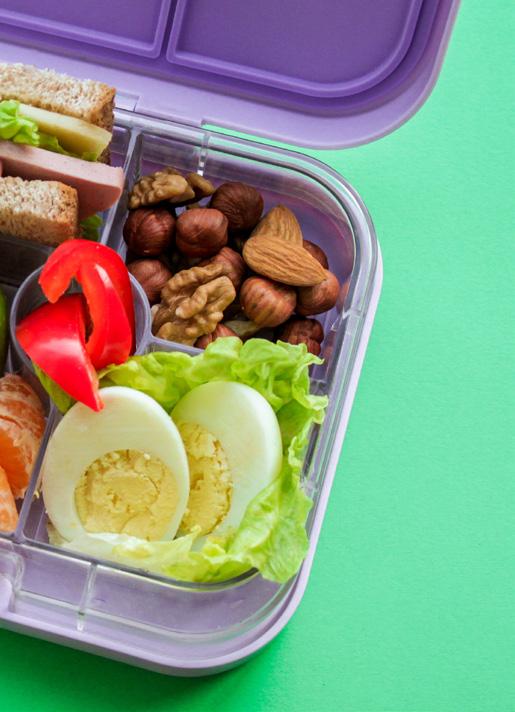
Diet Culture
It’s almost impossible to escape diet culture. Dr. Cheryl Aubie is a Halifax psychologist who also works with the province’s Eating Disorder Clinic. She believes that our culture venerates diet and weight loss. “It is absolutely true that many people have a disordered approach to eating.” says Aubie.
Disordered eating isn’t an eating disorder diagnosis. Aubie explains that disordered eating is a concept explaining when people are on the verge of unhealthy food attitudes and behaviours. Diet culture that feeds disordered eating suggests that people are worthy based on their body size. It vilifies some ways of eating and celebrates others.
Dr. Phillip Joy, assistant professor in applied human nutrition at Mount Saint Vincent University adds that diet culture



limits acceptable bodies to certain types. “This often leads to feelings of inadequacy if your body deviates from these standards,” Joy says.
Aubie says that there is a greater risk for people who have (or are exposed to) unhealthy eating behaviours to develop serious eating disorders. “When fat phobia exists, you are more likely to see problems but if you are mentoring the right behaviours the risks are lower,” she explains.
According to the Canadian Eating Disorders Strategy released in 2019, approximately a million Canadians meet the diagnostic criteria for an eating disorder. Equally concerning is the number of young Canadians engaging in risky dieting behaviour. Eating disorders can develop throughout a child’s development, with or without the modelling of good eating behaviour.
Joy, who has partnered with Eating Disorders Nova Scotia to study disordered eating in the local LGBTQS+ community. He thinks all children are vulnerable. “The pressure to look a certain way and change the way we eat are very high, especially for young people,” he says. “It’s typically thought that boys are not as vulnerable, but this is not the whole story. There are different pressures for different groups of children and people.”


When change is good

Not all changes to eating patterns are cause for concern. Sometimes a health condition requires dietary changes. As a parent, planned weight loss that will have positive implication on health and longevity are many times the catalyst for change— that’s not disordered eating.
Science has revealed a lot about how nutrition is an important factor in disease prevention, health, and life span.
Barb Brennan, a registered holistic nutritional consultant and owner of Honey and Ginger, a wellness shop with two locations in the HRM that provides nutritional counselling, health supportive foods, supplements and a host of other services for healthy body and mind, says that it’s important to remember that no one diet fits everyone.
“I live and work in a world where people are in and out of our business looking for advice for all types of diets. It’s all about finding what is best for you,” says Brennan. “For example, we might have a client that is following the keto diet. For them they just feel better and they think clearer. A lot of people want quick result to lose weight. We caution people that what is good today has to be good in the long term and what it all comes down to is balance and focusing on real food.”
“When you are making changes for health reasons talk about this with your children,” says Aubie. “This is also an opportunity for the family to make these healthy choices together. It’s also is easier when you are preparing the same meal so that when everyone sits down to eat together it doesn’t draw as much attention to the person that is eating the different meal.
From a nutritional perspective, communication is key and allows your kids to ask questions and be curious about healthy eating guidelines.
“I would recommend people to follow Canada’s Food Guide as an approach to wellness and longevity,” adds Joy. “You have 1675 Lower Water Street


Join us this March Break! Come, See, & Do Onsite and online!
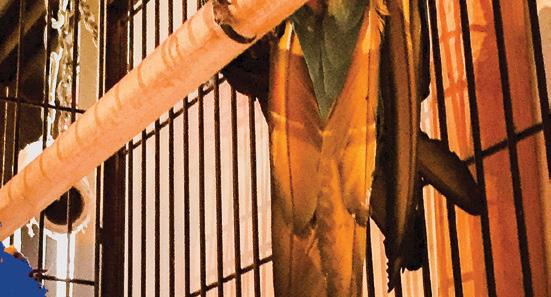
maritimemuseum.novascotia.ca

to be careful to ensure your sources of information come from credible sources when it comes to nutrition. These approaches would be to eat a varied and balanced diet with an emphasis on eating plenty of vegetables and fruits, whole grain food and protein foods that come from plants more often. Limit highly processed foods and if you choose these foods, eat them less often.”
Government updated the guide in 2019, based on the latest research. “Until recently, a lot of people in the nutrition world were not happy with Canada’s Food Guide but the new guide is a much more realistic vision and more on track for wellness than before,” says Brennan. “We also have to remember that nutrition and wellness is not just what we eat. It’s what we breath, what we put on our skin and how we cope with stress.”
Diet culture and disordered eating are rooted in self-worth. Brennan encourages people to seek more positivity.
“All food has energy,” she explains. “Fresh local food is best for this. There are a lot of people who have never made a trip to their local farmers’ market. There is something that happens when you hand pick your vegetables, or you pick up fresh eggs. There is a good energy in this, and people benefit from that.”
Shifting away from diet culture takes a change of mindset. “There is an important mental health component here,” says Brennan. “I think trying different ways of eating can be a healthy thing to explore, especially if you are trying to find the right food for what your own body needs. A change in diet can open up opportunities to try new foods but in the end it all comes down to balance.” n
REDUCE THE RISK OF DISORDERED EATING
• One of the best tools is eating together as a family. When kids grab a plate and go to their room you don’t know what is happening with their food. • Try not to comment on weight or body size. • Mentor through your own eating practices by eating according to Canada’s
Food Guide recommendations. Also, mentor through cooking more often and together, exploring different foods, eating and enjoying together.
When you eat with others, it’s important to remember to:
• Take your time and be with each other • Put away distractions like the TV or electronics. • Talk to those around you and share what is going on in everyone’s life. Feedback
www www
ourchildrenmagazine.ca OurChildrenMagazine @OurChildrenMag tadams@metroguide.ca
The best gifts have always been Settle in for some made at home. cozy winter reading time with kids.

Here are some great options for your winter reading.
TOGO TO THE RESCUE
Laura King Children’s fiction: uplifting; based on real characters by motherdaughter team.
New World Publishing $13.95 G IS FOR GAEL
Shelayne Hanson For teachers, adults and children looking to understand and connect with Nova Scotia’s Gaelic history.
Bradan Press $14.99
www www
www www
SABLE ISLAND - IMAGINE!
Janet Barkhouse Age 6-12. Sable Island - Imagine this amazing island made of sand!
Curriculum Plus $8.95
www www

EASTER GIFT IDEAS

1
ACORN PRESS
$22.95 Anxiety is tough. This tender picture book portrays what it’s like to have anxiety and responds to it with the potential of whimsy and joy. acornpresscanada.com

3
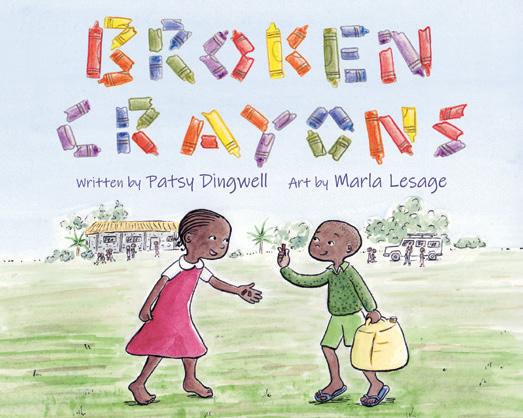
ACORN PRESS
$14.95 A book that teaches gratitude for what we have and that no matter how little we have we can still share with others. acornpresscanada.com
2
AMAZING BLACK ATLANTIC CANADIANS
$19.95 This fascinating, illustrated book features over 50 amazing Black people from across the Atlantic provinces, sharing their incredible stories and accomplishments, past and present. Nimbus Publishing nimbus.ca

4
ACORN PRESS
$13.95 Stories passed down from generation to generation. Hear them, learn from them, experience them, but most of all enjoy them! acornpresscanada.com



5
MI’KMAW DAILY DRUM
$14.95 A baby board book that teaches young readers Mi’kmaw concepts and a Mi’kmaw word for each day of the week. Nimbus Publishing nimbus.ca

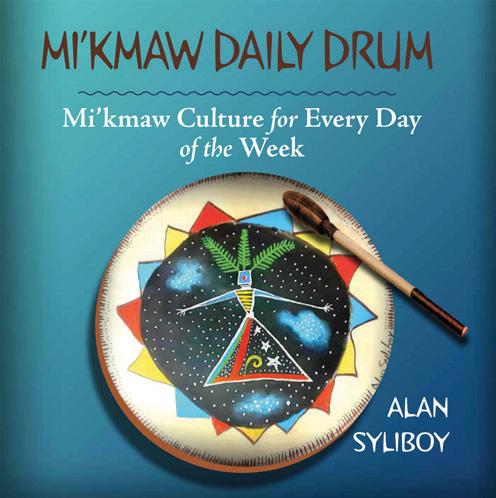
Bust!March Break or
Sabine Morris, Esja Nener, and Scarlett Stevenson gear up for their second pandemic March Break. With plans for lots of fresh air and activities close to home, the three students appreciate a week away from a school routine that was anything but routine this year.
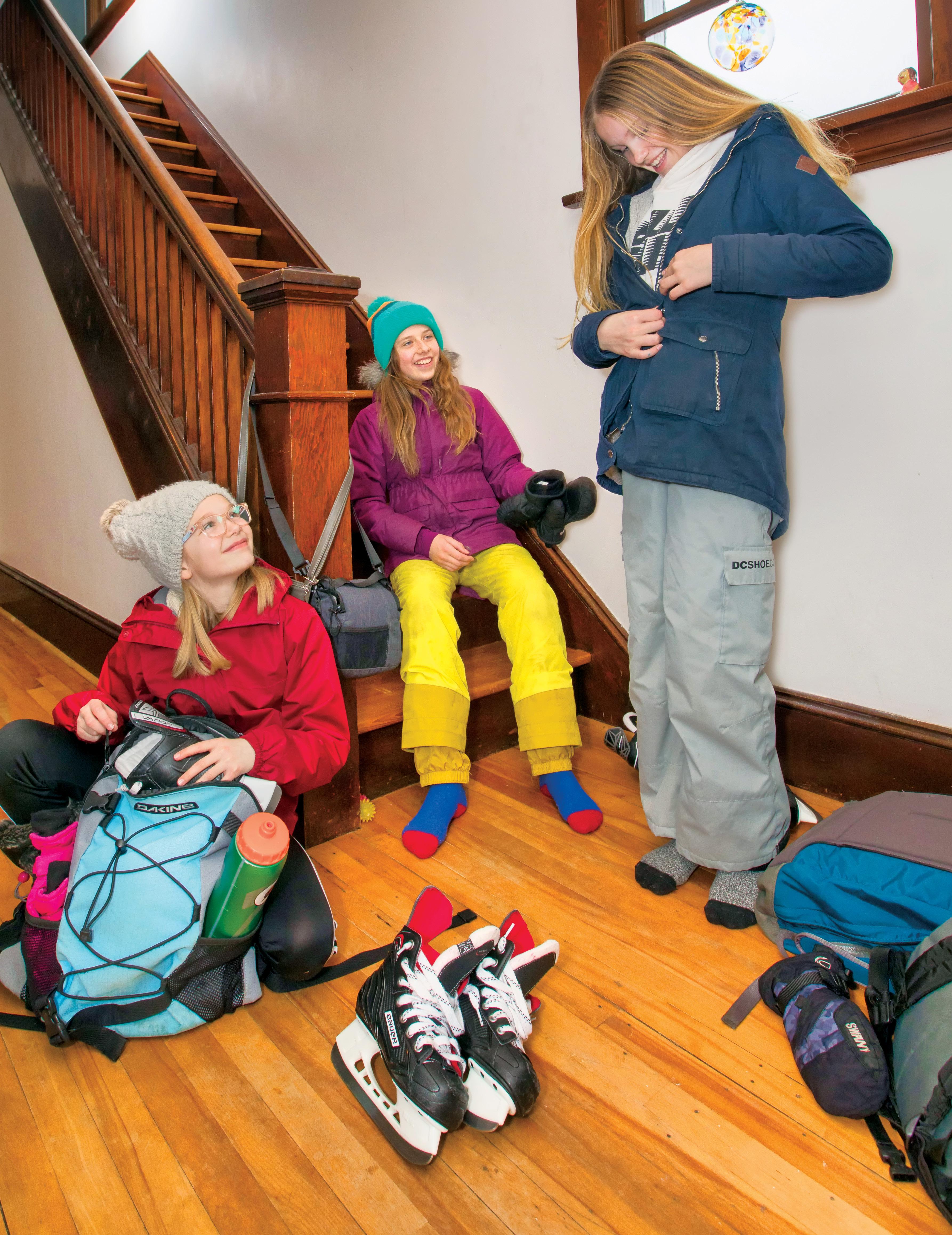
With pandemic travel precautions, families are rediscovering the joys of at-home vacations
After almost a year of home-schooling stints, physicaldistancing, mask-wearing, bubbling, and other onand-off measures to grapple with COVID-19, March break won’t be like we remember.
Trips to warm and sunny Walt Disney World, or even cold and snowy New Brunswick, are off the table. But there’s no shortage of things to do around the province and right here in Halifax.
“People are discovering just how great it is here and how much there is to offer right on our doorstep,” says JanSebastian LaPierre, author of the A is for Adventure children’s book and co-founder of a local business of the same name, which aims to inspire people to get outdoors and explore. “The amount of people who have gotten out is at an all-time high. I hope post-COVID this continues.”
PARENT PRO TRIP While they’re pretty good about getting kids outfitted properly for the elements with scarves, mitts, hats and waterproof boots, parents aren’t always so savvy about dressing themselves, which can take the fun out of a day outdoors. That doesn’t mean you have to spend a bundle at an outdoor gear shop, says LaPierre, who likes layers and has been sporting his 18-month-old son on his latest hiking adventures. There are plenty more affordable options at big box retailers like Costco or Walmart, or even better deals at Value Village and Frenchy’s.
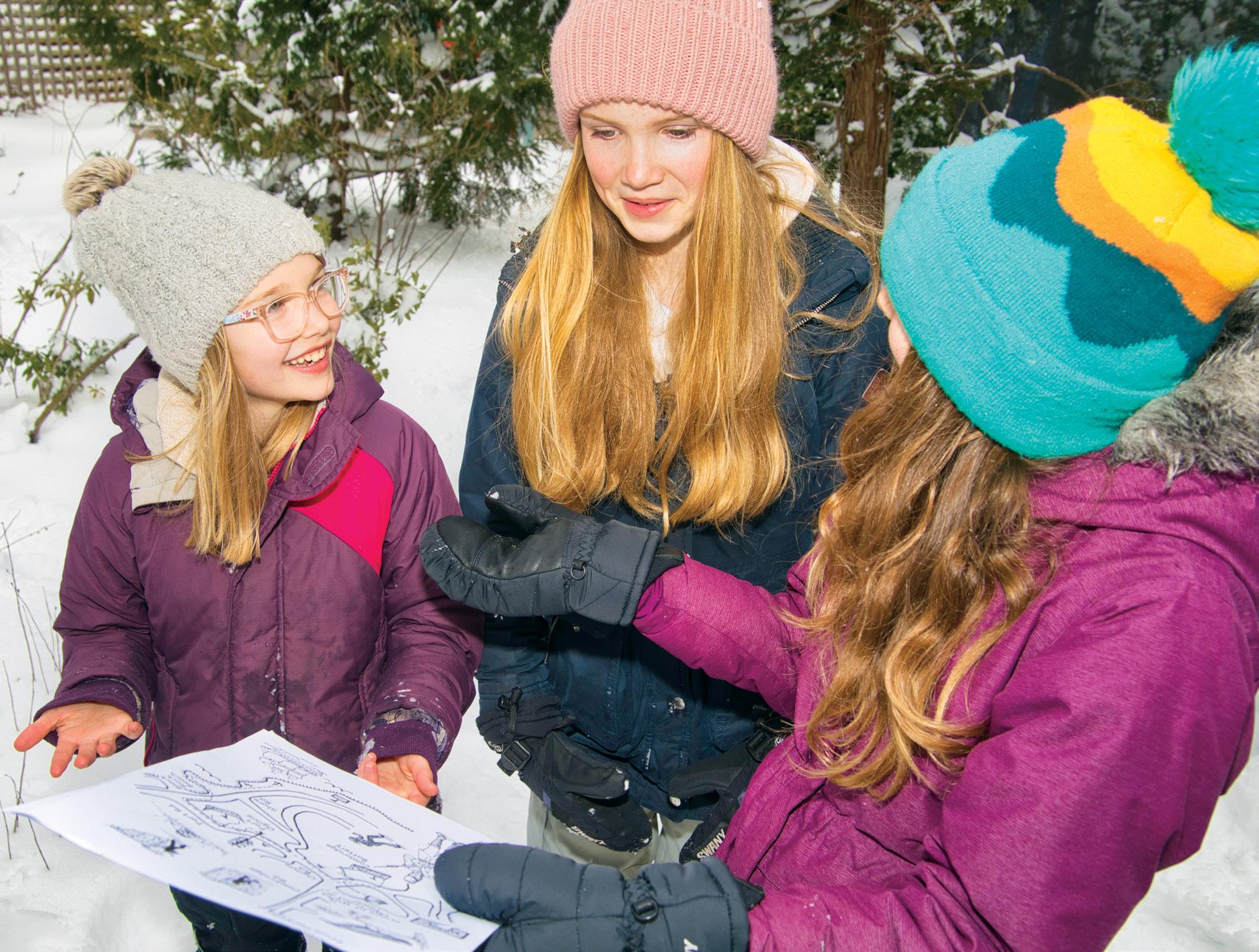
LEARNING ADVENTURES OUTDOOR ADVENTURES
A skate on the Oval on Halifax Common or a sledding excursion are great ways to fill up with a few hours of fresh air. Top spots around the city for sledding include Citadel Hill, Merv Sullivan Park (AKA “the Pit”) in the North End, Gorsebrook Field in the South End and Flinn Park in the West End, Dartmouth Common, the Mother Hill behind Mount Saint Vincent in Clayton Park, and Bedford’s De Wolfe Park to name a few.
The Adventure Earth Centre, part of HRM’s parks and recreation service, offers free snowshoes. Families can get outfitted with pairs at Chocolate Lake Recreation Centre the head off to try out the trails at Sir Sandford Fleming Park along Purcell’s Cove Road or Shubie Park on the north side of Lake Micmac in Dartmouth.
For a bit more structure, Earth Adventures has 30-funfilled trails in and around Halifax and the Annapolis Valley that are geared toward children from ages five to 12. On 1.5-hour, 1.8-kilometre trip on the Halifax waterfront, kids can learn how wild creatures survive in an urban landscape, or head to Woodens River for a “wizards and potions” two-hour hiking adventure. Find details at earthadventures.ca.
Geocaching is another activity that appeals to all ages. There are at least a half a dozen Facebook groups around the province for the GPS-enabled outdoor treasure hunts, a craze that started in 2000. With GPS, participants navigate to a specific set of coordinates and then try to find the hidden “geocache,” typically a hidden container with a logbook.
There are countless apps to enhance the outdoor experience. Consider Seek by iNaturalist, which helps identify flowers, trees, birds and animals. For an evening outing, apps such as SkyView or Star Walk 2 offer a more illuminating experience, teaching about the nighttime sky and constellations. Fisherman’s Cove in Eastern Passage and Hubbards Beach are prime spots for stargazing.
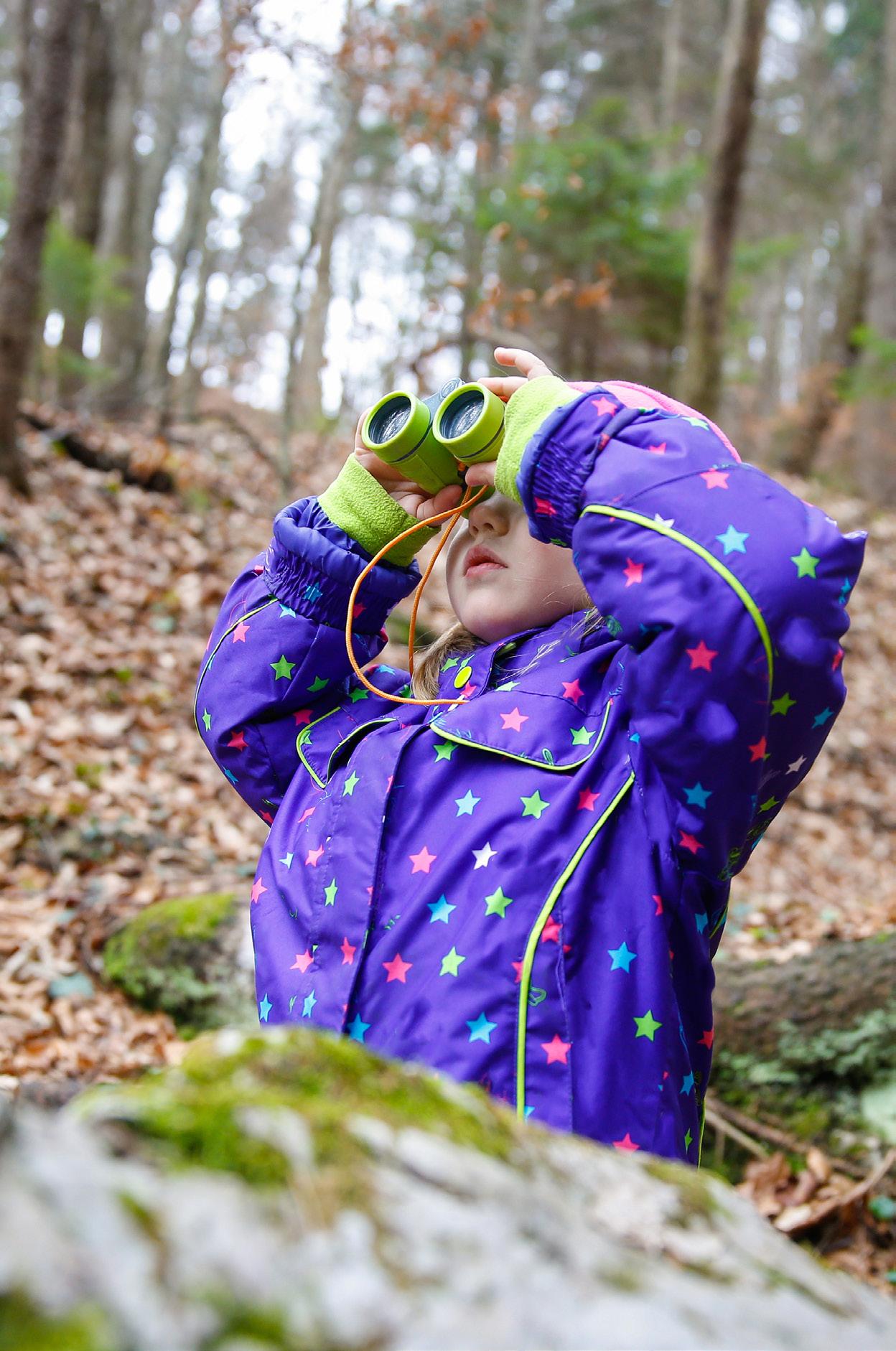



OUT-OF-TOWN ADVENTURES
A 1.5-hour drive from Halifax, 30 kilometres of hiking trails surround Sugar Moon Farm. The family-run maple syrup operation has snowshoes to rent, with a book-in-advance option, and a takeout menu of sandwiches, maple mac and cheese, and other carb-filled fair to keep the kids fuelled for the adventure.
A little further afield is Keppoch Mountain, a recreational hub near Antigonish with groomed areas with cross-country skis and snowshoes for rent and hilly trails for “fat-biking” with mountain bikes equipped with wide tires (between 4” and 5”) that can handle snowy conditions.
NOT A FAN OF THE OUTDOORS?
Downtown Halifax has an array of indoor options for March Breakers looking to get out of the cold. The Discovery Centre is free on Wednesday nights, while the Art Gallery of Nova Scotia has free admission on Thursday nights. The Maritime Museum of the Atlantic and the Canadian Museum of Immigration at Pier 21 are free for children five and under.
Love Struck Lettering calligrapher Lyndsay Hubley has published a workbook to help kids learn to write in cursive.
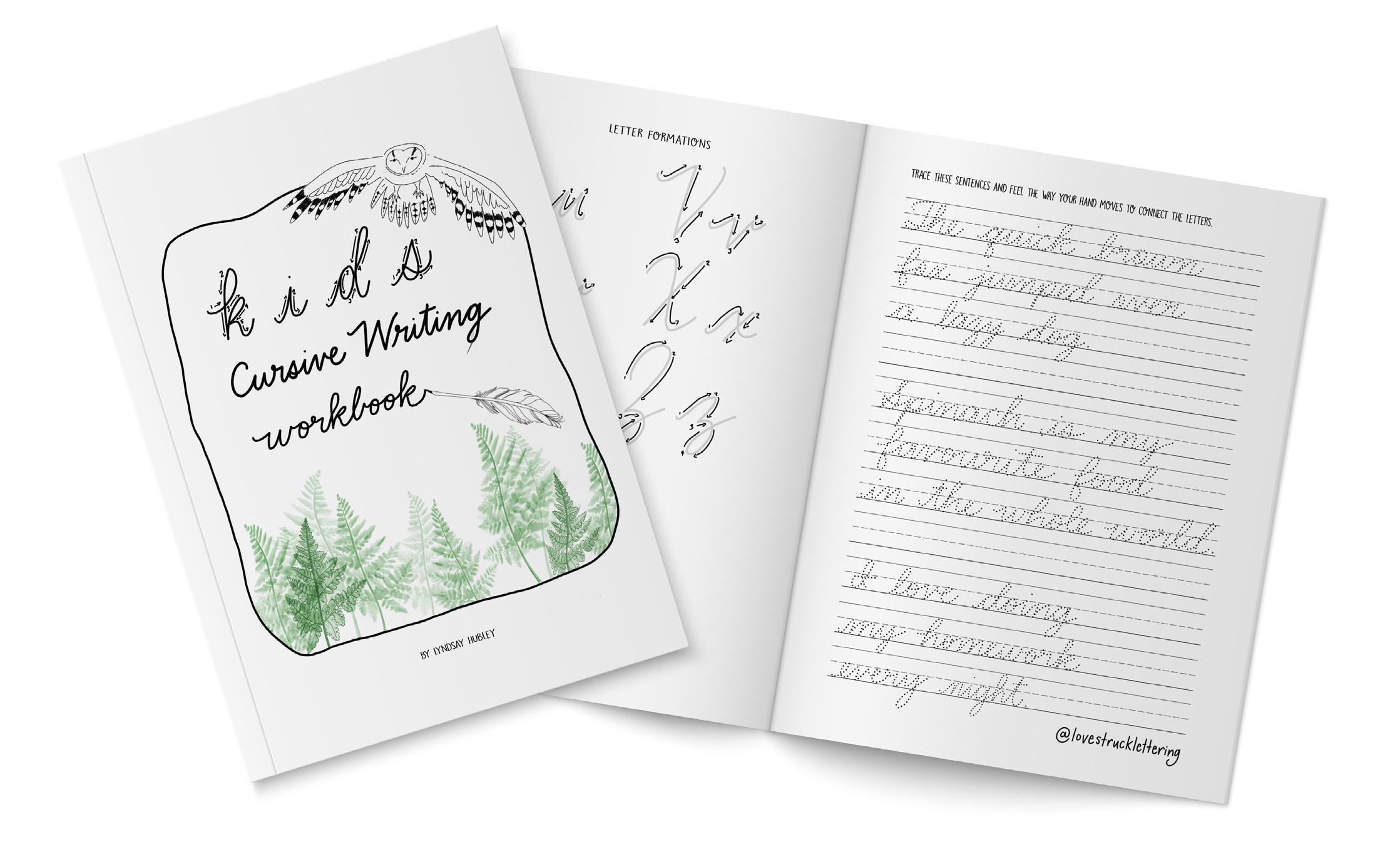
A lost art Reconnecting kids and communication— back to the basics with writing and phone skills
By Sara Ericsson
PHOTO: CONTRIBUTED
Communicating used to take one of three forms: talking in person, chatting over the phone or corresponding through hand-written notes and letters. The family phone was a hot commodity, with parents and their children competing for access so they could phone friends and talk about nothing in particular, and the mail arriving brought with it the exciting prospect of opening a personally written letter.
Communication looks a little different these days. The family phone has vanished since the advent of the BlackBerry in 1984 and the PalmPilot in 1996, devices which were followed by pagers and cellphones weighing more than a kilogram. And now, children use smartphones, laptops, tablets, and other smart devices where, with the tap of a few keys or buttons, they write out and edit texts and messages before sending.
It’s been a long while since we or our children have kept in touch with more traditional forms of communication and, the more time passes, the less familiar we become to these. Reconnecting with communication can be as simple as penning a thank-you note or phoning a friend, so consider one of the following lessons to get started.
Make the call
Mary Jane Copps has made a career out of teaching people to speak on the phone as The Phone Lady, and this is thanks to the number of people in need of a phone-skills refresher. Whether smart or landline, making a phone call is a fast fading skill.
“It’s a skill that takes time to develop, but with the family
phone having largely disappeared, people are starting careers and finding they suddenly have to use the phone for the job when they are completely without any knowledge of that skill,” she says.
Copps says this is a drastic change from past generations for whom the family phone was an institution, and using it to connect with friends and family wasn’t a skill, but rather a given. Copps says this has slowly started changing since the BlackBerry’s launch in 1984 and, with young children now having access to their own smartphones, people have become more comfortable using phones with their fingers rather than with their voice.
“When communicating over messaging or email, we have time to edit, whereas in real-time conversation, everything is spontaneous, and this causes stress,” she says.
But while this disconnect has never loomed larger, Copps says getting kids comfortable with phone conversation needn’t be complicated, and can start with a parent or guardian reconnecting with it themselves, as an example for the child to look up to. She recommends that families set up something like a Sunday family phone call, or a three-day no texting challenge, to get started.
“A conversation is how we create ideas, share jokes and really stay in touch. In the world we currently live in, where people are more and more isolated [due to COVID-19], a conversation is a fabulous way to really stay in touch with people,” she says.
Note it down
A sense of nostalgia has long kept people attached to the notion of hand-written notes and letters. And while the practice has generally dwindled, there has always been a small percentage of
people who’ve kept it going. Those people, these days, are largely millennials, according to Duly Noted Stationery owner Nicole Smith, who’s seen a spike in sales at her Halifax store over the last few years that she credits to people reconnecting with handwritten notes and millennials in particular, who she says “are supporting the stationery industry as they purchase more greeting cards than their previous generations.”
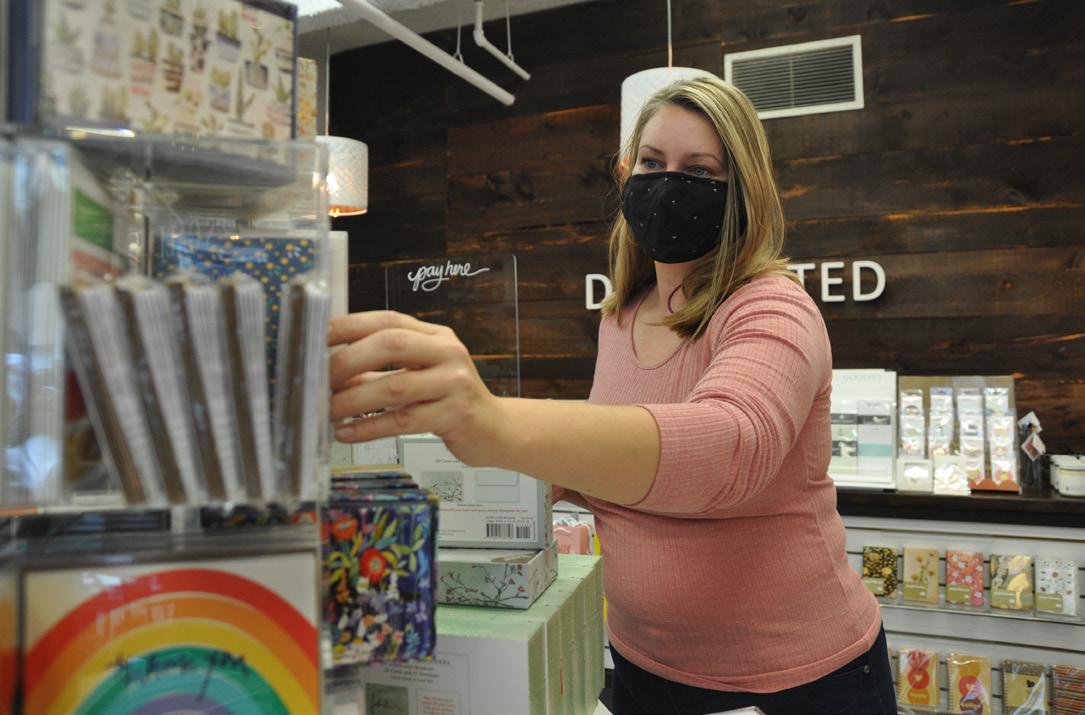
PHOTO: SARA ERICSSON
Duly Noted Stationery owner Nicole Smith says she has noticed more people engaging with writing over the past couple years, and among them parents who are reconnecting their kids with writing.
But the practice also seems to be on the rise in other age groups, as Smith has also noticed parents buying writing-related products from her store as they encourage their children to write. She says more should consider getting back in touch with sending personalized thank you cards after receiving gifts, mailing a friend a postcard, or writing notes in birthday cards. It’s a trend she feels will continue for the foreseeable future, as a greater reliance on tech—including children using laptops or tablets for school— means people will continue searching for ways to disconnect from it and reconnect with things like penning letters.
“It’s a way for kids to do something a bit more personal, and it’s showing them something a little more old-school. It’s a turn back to something that has a different kind of value, something you can hold onto. You can’t hold onto a text in the same way,” she says.
The art in writing
The next nostalgic step in reconnecting with writing personal notes would seem to be learning cursive, which Lyndsay Hubley has loved ever since she watched her grandmother write letters and cheques.
“I fell in love with the art of writing, and that was it for me,” she says.
Now, she works as the calligrapher behind her Love Struck Lettering business and has published a workbook teaching children how to write in cursive.
The workbook, available for order online or digital purchase and download through her Love Struck Lettering Etsy page, is something she’ll share with each of her four kids, including 11-year-old daughter Willa, who has already mastered some cursive writing. Hubley says that in addition to the motor skills and language comprehension that cursive writing promotes, she feels strongly that children should learn the practice as it requires concentration and separates kids from their devices.
“The workshop I taught had these kids so engaged. Cursive writing is an artform: it takes focus and concentration, and you have to be present while you’re practicing,” she says.
Her second main reason for teaching her own children is so that they too can one day watch in awe as the grown ups in their lives write notes in curvy script, and so they can read the handwritten cards her grandparents send.
“In this digital age, kids are growing up in world where they don’t carry those same memories that we do of watching a person sitting down with paper and pen,” she says. “This is why cursive will always win out: there’s a human element attached to something that’s handwritten.”
Foster creativity with kindness
Foregoing technology isn’t always the answer to reconnecting with communication, according to freelance writer and editor Stephanie Domet, who has been teaching kids how to write over video calls during the COVID-19 pandemic.
Domet teaches her Tiny Empire Writing Workshop, which
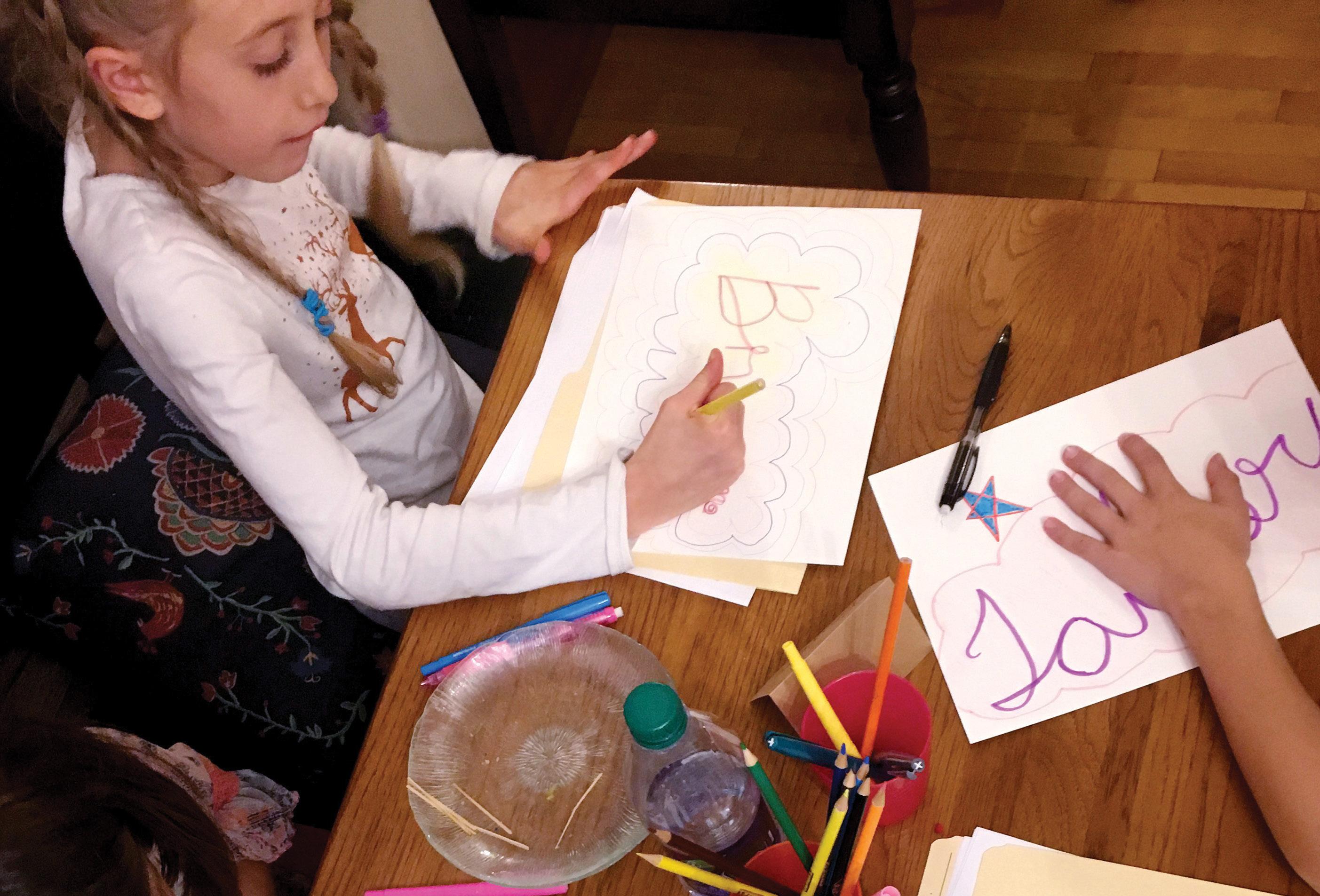
Lyndsay Hubley’s niece, 10-year-old Brynn Mykietiuk, practises writing in cursive.
fosters children’s writing interests with writing prompts and personalized feedback on their stories, and has grown the workshop from a small number of kids to two different age groups: one for kids under 11, and one for those who are 11 and older. Domet now teaches children from Nova Scotia to British Columbia and attributes this growth in interest to moving her classes online, which is a move she says has also revealed how writing has acted as a creative outlet to help relieve kids’ stress.
“During the pandemic shutdown, writing was doing for these kids what it does for others: giving them a place to work out their feelings, whatever their anxieties might be. This is one of the gifts reading and writing can give us: it teaches us about being human,” she says. n
ourchildrenmagazine.ca tadams@metroguide.ca Feedback
OurChildrenMagazine @OurChildrenMag Willa Loving the loops Willa finds the fun in fancy letters
Willa Hubley, 11, started getting curious about cursive at the age of four. She has since learned to write and has perfected her name, with her favourite letters to write being ells. She wanted to be able to write like her mom, calligrapher Lyndsay
Hubley, with “fancy letters.”
“My favourite letter is L because I love doing the loops. My mom taught me the W,” she says.
Willa says there are lots of writing lessons at her school, mainly in printing, and that she writes her journaling assignments with some letters in cursive. Her friends have tried out some cursive letters too, but for Willa, cursive is becoming her go-to script.
“It’s the only way I’ll write my name,” she says.


